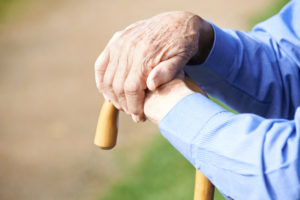
iStock
“THE GEOGRAPHY of Happiness” is an upcoming National Geographic talk on “blue zones” by a panel of scientists. Blue zones? Those are the five regions around the world with the highest concentrations of centenarians. The panel will include Dan Buettner, author of the 2005 National Geographic article and subsequent book that described the zones and the variables contributing to their people’s longevity.
The original study—by Belgian researcher Michael Poulain, who came up with the concept of blue zones, and other researchers—identified Nuoro province in Sardinia as having the highest concentration of males age 100 and over, including the village of Seulo, which holds the record of 20 centenarians (in a total population of around 1,000 between 1996 and 2016).
Later research in Sardinia found a one-to-one ratio of centenarian women to men, compared with five to one elsewhere. Another blue zone, the islands of Okinawa, Japan, boasts about 6.5 centenarians for every 10,000 people—compared with 1.73/10,000 in the United States. And women over 70 in Okinawa are the longest-lived population in the world.
In 2004, according to NPR’s The Salt, Buettner “rounded up a group of anthropologists, demographers, epidemiologists and other researchers” to travel around the world interviewing “hundreds of people who’d made it to age 100 about how they lived”—and came up with the five winning locales described in his book The Blue Zones: Lessons for Living Longer From the People Who’ve Lived the Longest.
The blue zone all-stars of the U.S. are a group of Seventh-day Adventists in Loma Linda, California, who live 10 years longer than their North American counterparts. For a nearby dip into this good life, another blue zone is Costa Rica’s Nicoya Peninsula, where lodgings range from boutique hotels to an Airbnb treehouse.
The fifth blue zone, the island of Ikaria, Greece—featured in Buettner’s 2012 New York Times article “The Island Where People Forget to Die”—in 2009 had the highest percent of nonagenarians on the planet, with nearly one out of three people making it to the ninth decade. The island boasts low rates of cancer and heart disease as well as little dementia.
Among lifestyle variables that contribute to blue zone residents’ longevity: moving their bodies “a lot”; participating both in social circles that “reinforce healthy behaviors” and in the broader community; taking time to de-stress; and focusing on their families, according to NPR. Recent blue zone projects in dozens of U.S. communities focus on the “Power 9”—nine “evidence-based lessons of longevity” that can be implemented to create blue zones.
“Family—put ahead of other concerns” is the No. 1 variable on the Venn diagram of overlapping longevity clues from Okinawa, Sardinia and Loma Linda. The diagram overlap also specifies “constant moderate physical activity—an inseparable part of life.” Beaches for swimming and surfing line the Okinawan islands and the Nicoya Peninsula.
And, of course, there’s diet. The Venn diagram overlap lists “semi-vegetarianism—the majority of food consumed is derived from plants”; and “legumes—commonly consumed.”
In his second book, The Blue Zones Solution, Buettner focuses on food, for example, the “80% rule”: “stop eating when your stomach is 80% full to avoid weight gain”—though how to determine fullness at that percentage is unclear. Also, he advises eating the smallest meal of the day in the late afternoon or evening.
The Bluezones website has 10 food recommendations with catchy labels, starting with the “95/5 Rule: Eat plants. 90-95 percent of your food should be fruits, vegetables, grains, greens and beans.” Others are Retreat from Meat; Take or Leave Fish (because “modern-day fish has become so contaminated with pesticides and other chemicals”) and Diminish Dairy (egg limit of 3/week). Also, Slash Sugar and Go Wholly Whole (“only whole foods or foods processed with fewer than five ingredients”).
Eating preferences differ by blue zone. The Ikarians’ diet is notable for “its emphasis on potatoes, goat’s milk, honey, legumes, wild greens, some fruit,” according to Buettner. The longest-lived Sardinians are shepherds of grass-fed animals —and thus consumers of large quantities of goat’s milk and sheep’s cheese, including a sharp pecorino, with high levels of healthy omega-3s—along with bread, fennel, tomatoes, almonds and wine.
The Seventh-day Adventists in Loma Linda follow a “biblical” diet focused on grains, fruits, nuts and vegetables; they drink only water; and the community’s “pesco-vegetarians who ate up to one serving of fish a day lived longer than their vegans,” Buettner writes.
On the Nicoya Peninsula, the “big secret,” according to Buettner, is the “three sisters of Meso-American agriculture: beans, corn and squash”—plus a list of local fruits and vegetables.
The city of Fort Worth, Texas, has communicated directly with the town of Seulo and blue zone experts about becoming a blue zone. Of U.S. communities signing up to participate in the “Blue Zones Project,” dozens have been “certified” to date by blue zone teams who help community leaders follow a “menu” of 20 policies to make their communities healthier—although there has been some pushback against “social engineering” overtones.
At the October 10, 2017, National Geographic event, Dan Buettner and a panel of experts will discuss the science-based strategies that communities, businesses and individuals can use to cultivate greater joy, deeper meaning and increased satisfaction, and design a life of fulfillment and well-being. The evening’s event, moderated by Susan Goldberg, editor-in-chief of National Geographic magazine, is at 7:30pm. For tickets, click here.
—Mary Carpenter
Read more well-being posts right here.

